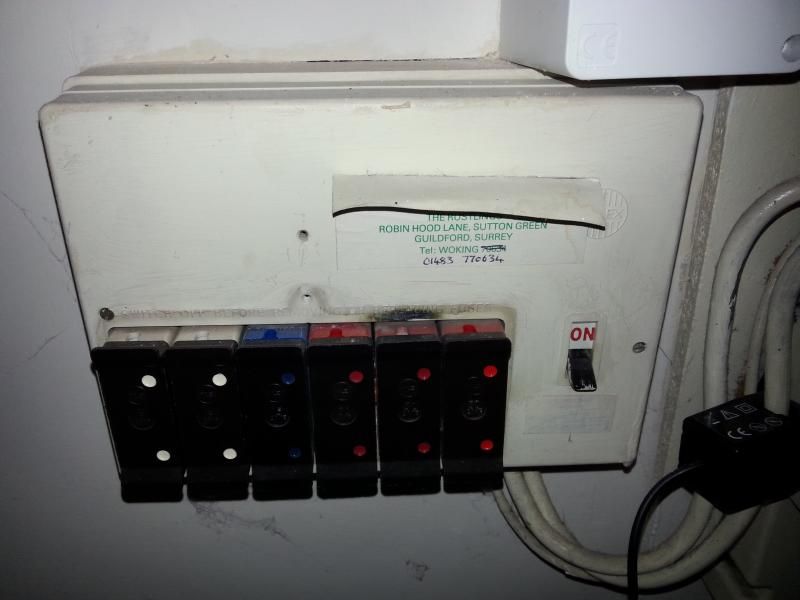Hi all, my house has one of the old style fuseboards for the mains electrics. This morning I went to have a shower and found that the pump wasnt working, then found other electrics that weren't working.
I took off the cover of the fuseboard and it looks like there is a black stain where the fuse has burned out. This also appears on the inside of the cover. This fuse seems to be labelled 'sparks'. Is this common electricity parlance for something? It seems to be the plug sockets downstairs, plus the shower pump, which must be wired into where the boiler is (downstairs, same as the heating controls which have gone off, but are upstairs).
We had the kitchen redone a couple of years ago and I thought the electrician put the kitchen on a new mcb (which you can see in the picture labelled 'circuit 3 ring main'). However some sockets in the kitchen have tripped, but not the one which is one of those compound sockets with a plug and the oven on/off switch.
I believe this happened during the night, and the only thing that was actually in use was the dishwasher, but I thought that was on the new mcb'd ring main...
I dont really know about any of this stuff so any advice would be very much appreciated. Is it possible/safe to replace the fuse now as an initial fix? I think it would be good to have it all on trip switches rather than old fuses as it seems there might be a small chance of a fire if they go!
Cheers, Rich


 [/img]
[/img]
I took off the cover of the fuseboard and it looks like there is a black stain where the fuse has burned out. This also appears on the inside of the cover. This fuse seems to be labelled 'sparks'. Is this common electricity parlance for something? It seems to be the plug sockets downstairs, plus the shower pump, which must be wired into where the boiler is (downstairs, same as the heating controls which have gone off, but are upstairs).
We had the kitchen redone a couple of years ago and I thought the electrician put the kitchen on a new mcb (which you can see in the picture labelled 'circuit 3 ring main'). However some sockets in the kitchen have tripped, but not the one which is one of those compound sockets with a plug and the oven on/off switch.
I believe this happened during the night, and the only thing that was actually in use was the dishwasher, but I thought that was on the new mcb'd ring main...
I dont really know about any of this stuff so any advice would be very much appreciated. Is it possible/safe to replace the fuse now as an initial fix? I think it would be good to have it all on trip switches rather than old fuses as it seems there might be a small chance of a fire if they go!
Cheers, Rich


 [/img]
[/img]
